Have you ever tried to crowd-source a solution for your dog’s behavior issues?
There are plenty of popular dog training Facebook Groups out there like Reactive and Aggressive Dog Community and Modern Dog Training and Behavior (both of which K9 of Mine’s founder recommends).
No matter what the problem is, if you ask any group of people what you should do to fix your canine’s issue, you will probably get as many answers as there are people.
In fact, they may get into arguments about each other’s answers because they’re all convinced that their solution is the best one!
Since dog training is a largely unregulated industry, anyone who thinks they have enough knowledge to be a dog trainer can call themselves one.
Because of this, there are many persistent but false myths that have sprung up about dog training.
Don’t worry! We’ll explore some common dog training myths and share the truth of the matter with you below!
Dog Training Myths: Key Takeaways
- There are a ton of myths, mistakes, and misunderstandings about dog training floating around the internet! Some of these are wrong, while still having a kernel of truth to them; others are just bizarre and nonsensical.
- You’ll want to learn some of the most common myths so you can avoid problems. We’ll share 21 of the most common dog training myths, and we’ll explain some of the ways you can learn to spot others.
- One great way to avoid these myths is by sticking to top-notch training resources. Obviously, this means reading K9 of Mine! But we’ll also share some other valuable training resources.
21 Dog-Training Myths Debunked (and the Science-Backed Truth)
There are countless myths about dog training, but we’ve tried to focus on 21 of the most common. We’ll discuss each below and try to set the record straight.
1. It’s too early to start training my dog.
This is a common myth, but the fact is it is never too early to start training your pup.
Your dog learns every day of his entire life. Everything your dog sees, smells, hears, tastes, or feels is a learning experience, and he will pick up things fastest if something pleasant happens in the process.
Starting to train your pooch the first day you bring him home, setting him up for success, and making fun, rewarding training a part of your everyday interactions will help Fido learn quickly and happily.
That being said, you shouldn’t set your expectations too high with a puppy.
Puppies are just babies, and while practicing some training basics will always be worthwhile, don’t be surprised if your pup doesn’t manage to be reliable with commands or properly regulate their behavior until past puppyhood.
This is true for adopted adult dogs too, who go through a decompression period as they get adjusted to their new home. During the first few months, don’t expect training to always go smoothly!
Many people start to freak out a little when they get a new puppy and realize they’ve brought home a bit of a terror. This is totally normal and nothing to freak out about.
So yes – teach your pup that toys are for biting, not you! But don’t start to fear that your puppy is an aggressive monster beast who will tear you apart the first chance he gets.
Puppies are just silly and kind of stupid. Good thing they are so cute!
Check out our Puppy Raising Blueprint Course to get your dog started on the right paw!
2. It’s too late to start training my dog.
Just like it’s never too early to train your dog, it’s never too late to train your dog either!
Dogs learn throughout their lives, and while there are prime socialization periods in puppyhood where your dog soaks up experiences like kitchen sponge, your dog’s learning capabilities don’t “turn off” at a particular age.
As long as you can give your dog something he likes (treats, toys, playtime, petting, etc.) when he does something you like, he will want to do those things more so you will give him more of the things he likes. And that continues as he enters his golden years.
If your dog has become blind, deaf, or otherwise-impaired over time, keep his sensory challenges like nosework in mind as you train, so you can use cues and reward markers your dog can still detect.
Check out this video to learn some helpful tips for training older dogs.
3. My puppy will grow out of his problematic behaviors.
Puppies are born ready to learn, and if you don’t teach them, they will happily get to work figuring out the world without your help.
This means that they will try just about everything once, and if they liked the action or the result they will probably do it again, no matter what you think about it!
And what puppies like is often attention – even if that attention is you screaming “no” at them (yay, we’re having a bark-a-thon) or grabbing their mouth (oh, are we rough-housing now? I love that game!)
So, you’ll need to address your pooch’s problematic behaviors if you hope to change them. In fact, you’ll want to address these issues as soon as you realize they’re a problem, or they can quickly become a habit that will be harder to change.
Some dogs are more concerned about how their people react to their behavior than others. While others are here to have fun – at any and all cost!

Some dogs naturally pay closer attention to us, and change their behavior so our responses to them are happier and more positive. This has a lot to do with the dog’s breed (for example, shepherd dogs have been bred to carefully pay attention to the owner’s signals, so they are often very intuitive and human-focused) and individual personality.
Luckily, finding rewards that motivate each dog is one of the goals of using positive reinforcement to train, and even dogs who are not too worried about what we think can be taught how to be wonderful pets.
It is worth noting that many irritating puppy behaviors will ease out as your pup gets older.
Puppy mouthiness is often exacerbated by a puppy going through the teething process, and that crazy puppy energy will lessen as your pup ages.
However, you’ll still want to work on limiting your dog’s chance to reinforce these behaviors through repetition.
So while puppy nipping and biting is normal you’ll still want to work on redirecting that behavior so that it’s not reinforced and becomes a habit into adulthood.
4. My dog is untrainable, and there’s nothing I can do about “X” behavior.
While some behaviors are harder to teach than others (for instance, teaching a pug nosework, due to their squished noses), all dogs can learn, and most of their problem behaviors can be changed or extinguished with training, management, and patience.
Some problem behaviors are considered pathologic and are a result of poor early socialization, medical issues, or genetic predispositions.
Luckily, dog trainers or behaviorists are trained to help dogs with serious behavior issues, no matter the nature of the problem.
If you aren’t able to observe any progress with your dog’s behavioral issues within a reasonable amount of time (say, a few weeks to a month), you’ll want to reach out to a professional, certified trainer or behavior consultant.
5. You have to be the alpha or dominate your dog
Simply put, no. You don’t have to “be the alpha” or “dominate” your dog to achieve training success.
Your dog wants to be your friend, not your boss.
Dominance theory and training methods using physical force are not good teaching strategies. They have been proven to be a poor way to teach our pet dogs and are linked to increased aggression.
Teaching your dog using positive reinforcement will result in a pooch who knows how to be a good pet and enjoys learning new skills!
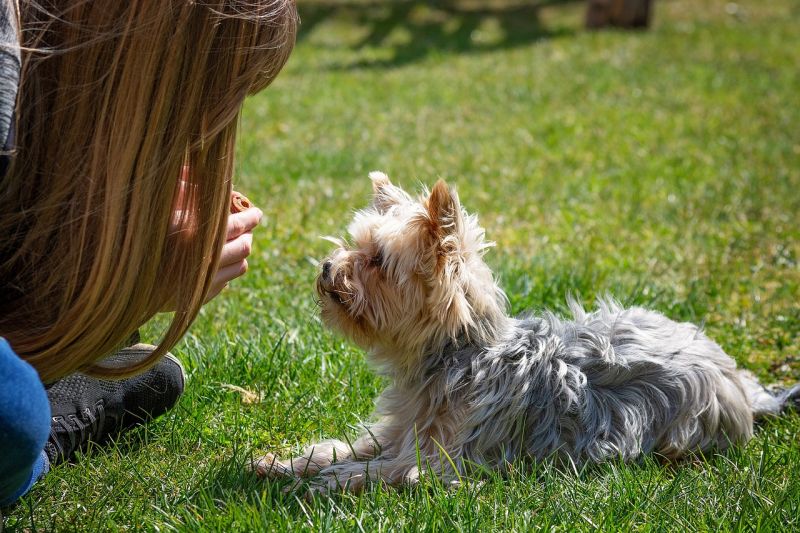
6. Prong/shock/chain collars will correct the problem easily.
Training equipment that uses aversives (unpleasant feelings or experiences) does not make you a better trainer, nor does it make a dog a better learner.
Generally speaking, these types of aversive tools that use positive punishment are unnecessary and potentially dangerous in un-experienced hands.
But this is not to say these methods never have their place. They can, for example, assist in situations that could otherwise cause a dog to become injured or die if a problem behavior is not changed quickly.
For instance, consider a dog with a strong herding drive, who has been chasing cars. Once the doggo starts running down a car, he stops responding to cues he knows and is normally good at.
In such a case, an electric collar may interrupt the problem behavior so you can cue him to come back. Such tools treat the symptom, not the root issue, would involve teaching your dog to control or redirect that herding instinct.
In fact, shocking your dog for chasing a car could introduce a new fear of cars (as the dog has learned that cars equal getting shocked).
None of these aversive products will eradicate problem behaviors on their own, and any behavioral changes they cause are temporary.
Thus, they should be used sparingly only in worst-case scenarios and only in addition to a well-developed training plan.
Some dogs will develop other “fallout” problem behaviors as a result of aversive training methods or physical injuries due to poor equipment use or mechanical malfunction.
7. Punishment can help prevent problematic behaviors.
None of our dogs are psychic, and there are no punishments that will magically teach your dog anything, or permanently stop any behavior.
Punishments are defined as anything that could cause a behavior to happen less often, and when they are used by people training dogs, they are often linked to fear, avoidance, and aggression.
Hitting, kicking, or yelling at your dog are not a good way to teach him anything.
If you punish your dog and he becomes afraid of you, he may seem to do less problematic behavior around you. But that’s only because he has learned to avoid you – and he may continue to do those things when you are not nearby.
Instead of punishing your dog, use a sound to interrupt an unwanted behavior while it is happening and then ask your dog to do something else to redirect him.
This part is key. Don’t forget that the word “no” means nothing to a dog. Instead of telling them to stop, ask them to do a non-compliant behavior instead (aka a behavior they can’t do while practicing the unwanted behavior).
An example might be – instead of yelling “no” when your dog jumps up on you, ask them to “go to your bed” (after working on this command so that they know it). Your dog can’t jump on you and go to their bed at the same time. Reinforce the going to bed action and hey – you fixed your dog’s jumping!
Instead of saying “no”, ask yourself what you want your dog to to instead of the undesirable behavior.
8. Crate training is cruel.
While your dog would always prefer to be by your side, dogs can learn to enjoy their crate over time.
If executed thoughtfully, gradually, and with compassion, your dog will likely view his crate as though it is his “bedroom,” rather than a space for punishment.
Using a crate can be very helpful for potty training puppies, and can prevent your pup from getting into trouble or chewing up cables when he’s home alone for a couple of hours.
But using a crate improperly is cruel and can lead to problems.
If dogs are not trained how to enjoy their crate space gradually, or are left in it for extended amounts of time every day, they can learn to associate their crate with the stress they feel while inside it.
However, dogs who have learned to enjoy their time in a crate can learn to feel comfortable and secure in it. This can even help many dogs who are experiencing separation anxiety or distress.
Crate training is also useful to help your dog feel less stressed if you’d like to safely confine him while he travels with you, or if he ever needs to stay at the veterinarian’s office for medical care.
While crates are in and of themselves nor cruel when used occasionally, there is a growing movement of trainers who suggest that leaving your dog in a crate for hours upon hours each and every day is not appropriate.
I’m sure you wouldn’t be pleased to be locked in a closet for 8 hours a day either!
In fact, crating your dog for long periods of time is outlaws in many other countries, with crate training being a uniquely American training method.
Instead of crates, consider if x-pens (basically, dog playpens) or indoor dog gates between rooms could accomplish the same goal of giving your dog a private safe space to stay out of trouble.
These solutions provide your dog with more space and allow you to safely leave your dog alone for long periods of time without locking them in a cage!
9. Positive training means your dog will only listen if you have treats in hand.
Treats are excellent to build motivation for learning new things, but they don’t have to be used forever.
Anytime we want to teach our dogs something new, they want to know two things: “What do you want me to do?” and “Why should I do it?”
Positive reinforcement training techniques are motivational because the dog wants something we have control of.
And while treats are often (quite successfully) used to motivate our dogs, you can also use toys, playtime, petting, or anything else your dog wants.
As long as you can control the reward and your dog wants it enough to try to earn it from you, it can be used as a reinforcer.
Check out this video to learn a little about using positive reinforcements other than food:
10. You should put your dog’s nose in pee/poop after potty accidents.
Training your dog to relieve himself outside does not require you to disrespect him by putting his nose in his waste, just like toilet training children does not.
Supervising your dog while he’s indoors, making sure to give him plenty of opportunities to go outside throughout the day, preventing accidents using supervision, and rewarding successes when they happen are some of the most important steps to take if you want to housetrain your dog.
In fact, rubbing your dog’s nose in the crime scene could cause him to be terrified to go to the bathroom at all!
Check out our potty-training article to learn how to teach your dog when and where he should relieve himself using only positive methods.
11. You can’t train dogs who aren’t food motivated.
Every dog likes something – and this means food is not the only thing that can motivate a dog.
In fact, motivation can take many forms.
It could be a toy, or a particular game played with that toy. It could be that special massage or scratch that they just can’t get enough of, or the opportunity to share some joy with their favorite people while doing something extra special, like going for a walk.
There are ways to make those special experiences even more valuable so they can be used as a reward for your dog’s effort and success as you teach him new things. And once a dog starts learning, he usually becomes a better student who learns faster and is more excited about earning rewards.
Also, many people try one or two types of treats for training and give up if their dog isn’t over the moon about them.
Instead, keep offering different kinds of bite-sized treats, in different locations and circumstances, and keep trying different things until you have three to five types of treats that your dog will usually eat quickly.
Usually the stinkier, the better. Freeze-dried meat treats are especilly popular!
Once you figure out what your dog likes, keep that treat mixture in your treat pouch all the time. The variety will keep them from getting bored with one particular type.
Check out the following video from McCann Dogs for some more info.
12. Dogs resent training.
Dogs often enjoy training; they only resent training if it is unpleasant and no fun. Dogs love to work with us and to help us accomplish tasks, and they also love to earn things that they like.
If training becomes a new game that you and your dog play together regularly, you give him plenty of reinforcement for his efforts and successes, and you always finish training sessions with a game or activity that he enjoys, he will love to learn and will look forward to the next time he gets to play the fun training game with you again!
13. Playing tug will make my dog aggressive.
Playing tug with your dog won’t make him aggressive.
To the contrary, tug of war is a fun, interactive game that encourages dogs to get excited about using his mouth and strength to win a valuable item from his playmate.
Playing tug with your dog can also be a wonderful opportunity to help him learn some great skills, including:
- Mouth control — If your dog is not careful about where he puts his mouth and accidentally nips you or your clothes, briefly pause the game. This can help him learn to be more cautious so the game can continue.
- How to take cues while playing — Practicing cues like “Take It” to start the game and “Drop It” to end the game is another way to improve your communication with your dog and adds another way to improve mouth control
- Turn a game into a reward — Some dogs like to play tug so much that you can use a short game of tug as a reinforcement during a training session
Some dogs may growl while playing tug, but since it happens within the context of the game you’re playing with him, it does not normally encourage aggressive behaviors in other contexts.
14. My dog is breed X, so he won’t learn.
There are no dog breeds who cannot learn with positive reinforcement training techniques. They’re all capable of picking up new habits and skills.
However, some breeds are naturally more independent, and may be less motivated by traditional training rewards.
If you can figure out what your dog likes and let him enjoy it as a reward in your training sessions, you will have a more interested and willing pupil as you go!
15. Dominance training is necessary for large dogs
Neither dominance theory nor training involving punishment are necessary to teach dogs of any size or type. This includes shepherds, pit bulls, Rotties, mastiffs, and any other large or assertive breed you can think of.
While larger dogs are presumed to need more training than small dogs for safety reasons, dogs of all sizes benefit from the improved relationship and safety that comes along with positive reinforcement style training methods.
Dogs taught in this way are more obedient and show fewer stress signals and aggressive behaviors than dogs taught with punishment or any kind of force.
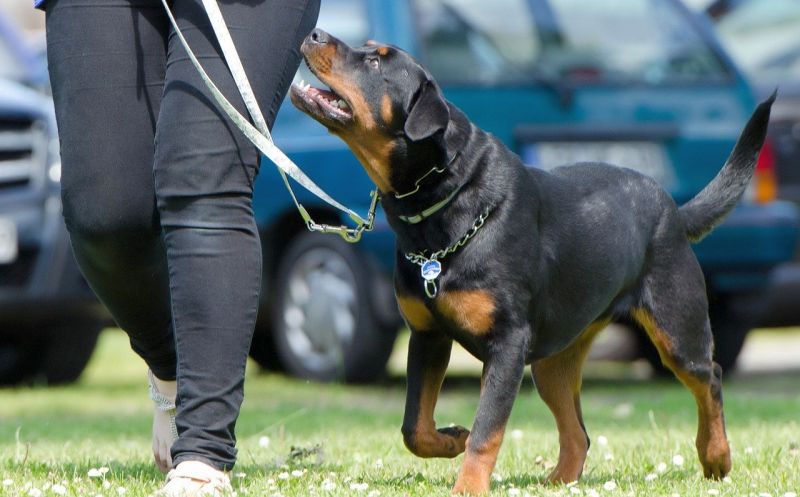
16. My dog did X because he’s mad at me.
Dogs do not do things because they’re mad at us. They don’t understand the value or cost of our belongings, nor do they attempt to punish us with their actions.
Most dog behaviors are motivated by social reasons or self-interest. Dogs who are not getting their basic mental or social needs met may feel stressed, and most of the behaviors they do while stressed help them feel calmer.
Many times, when owners think their pet is mad at them, the owners are projecting their own interpretations of how they would feel if they had performed the same behavior the dog did.
While we cannot know exactly how dogs think and feel about all the things we do, acting out of anger and spite does not seem to be the motivator for destructive behaviors.
17. I have to lead my dog through doors and eat first so my dog will know I’m the alpha.
Teaching your dog polite behaviors like waiting for permission to pass through an open door is a good idea for safety reasons, but it doesn’t have anything to do with “dominance.”
Dominance / alpha training theory does not apply to our pet dogs nearly as much as we used to think.
Accordingly, while teaching your dog polite manners so he doesn’t rush through doors or try to take your food is a good idea, none of your dog’s behaviors are motivated by your dog’s desire to dominate you.
Dogs do things because they find them rewarding, and if they haven’t learned an incompatible behavior to stop them from doing what they already like doing, they will probably keep doing it.
Using positive reinforcement to teach your dog how to be a good family member is a great way to change behaviors you don’t like so your dog will be the best pet he can be.

18. My dog is “dominant” or an “alpha” so he does X.
Your dog does the things he does because they are rewarding for him. No dog’s behavior is motivated by the desire to be in charge of you.
Dogs do like a lot of the same things we do, and some may be confident enough to try to acquire privileges that you aren’t comfortable letting him have, but this isn’t about “dominating” you.
Using positive reinforcement training is the best way to change your dog’s behavior, no matter what he’s doing that you don’t like.
19. Your dog won’t respect you if you let him sleep in your bed.
There are plenty of reasons why you may or may not want to let your dog sleep in your bed, but they have nothing to do with keeping your dog’s respect.
Dogs like the same sorts of things we do, and comfortable sleeping spaces are no different.
Dogs derive feelings of security by sleeping near the rest of their family, and our dogs love to be part of the action. If they’re cuddled up asleep with us, they’ll definitely notice when we get up to start another new and exciting day!
Preferred sleeping places are a resource that dogs will protect if they are worried that others may be trying to take over their space. Also, dogs consider it very rude when anyone bothers them while they are sleeping.
If your dog has gotten used to sleeping in your bed, and even if he has begun guarding the bed from you or others, there are some good training and management strategies available if you want to teach your dog to stay off your bed, or if you want him to wait for permission before he hops into bed with you.
Be sure to check out our guide to resource guarding to learn more!
20. Allowing your dog to follow you will lead to separation anxiety.
Your dog wants to be with you, doing the things you do. That’s why dogs make such good friends!
Allowing your pooch to tag along as you do things throughout the day will not cause him to develop issues when you leave.
Separation intolerance, anxiety, and isolation distress are derived from the stress dogs feel when they are alone.
Some dogs are prone to developing those separation anxiety no matter what we do – especially dogs who have been through several homes or spent time in shelters.
A dog’s individual reactions to feeling those stresses can range from trembling, panting, and drooling, to barking, whining, chewing things, and the destruction of windows and doors.
However, since we occasionally need to go places where our dogs are not welcome, it helps to have a containment strategy that keeps your dog safe, out of trouble, and happy until you come back.
Crate training, x-pens, and indoor gates are all good containment solutions for many dog households.
Getting your dog used to his crate gradually while using positive reinforcement training strategies is a great way to keep your dog from doing anything you’ll be upset about when you get back.
21. You know your dog did something wrong if he looks “guilty.”
Dogs don’t feel guilt, but they are excellent at reading body language. This means they know when you are upset as soon as you begin to feel that way.
Long before you look at them and ask “What did you do?!” your muscles tightened, you leaned forward, your face changed, and your eyes altered shape.
Your dog isn’t feeling guilty, but he is acting submissively in an attempt to diffuse your anger.
Lip licks, turning his head away from you, narrowing his eyes, flattening his ears, crouching down, tucking his tail, urinating, and rolling over on his back are all parts of a dog’s body language that says, “Please don’t be mad at me.”
In situations like this, chances are excellent that your dog does not know what behavior he did that got you so upset.
If shoe chewing was the issue, why didn’t you say something about it as soon as he started to do it 3 hours ago?
Instead, your dog saw you get upset when you came home, and perhaps you’ve been getting upset when you come home a lot recently, so your dog may also be starting to perform appeasement behaviors as soon as you arrive to try to keep you from being upset about… whatever it is that you’re upset about today.
The best thing you can do when your dog has made a poor choice about how to spend his time when you are away is to manage the behavior by changing the antecedent (ex. put your shoes in a secure place before leaving), or isolate your dog in crate or via baby gates so that he cannot damage your things when you’re gone.
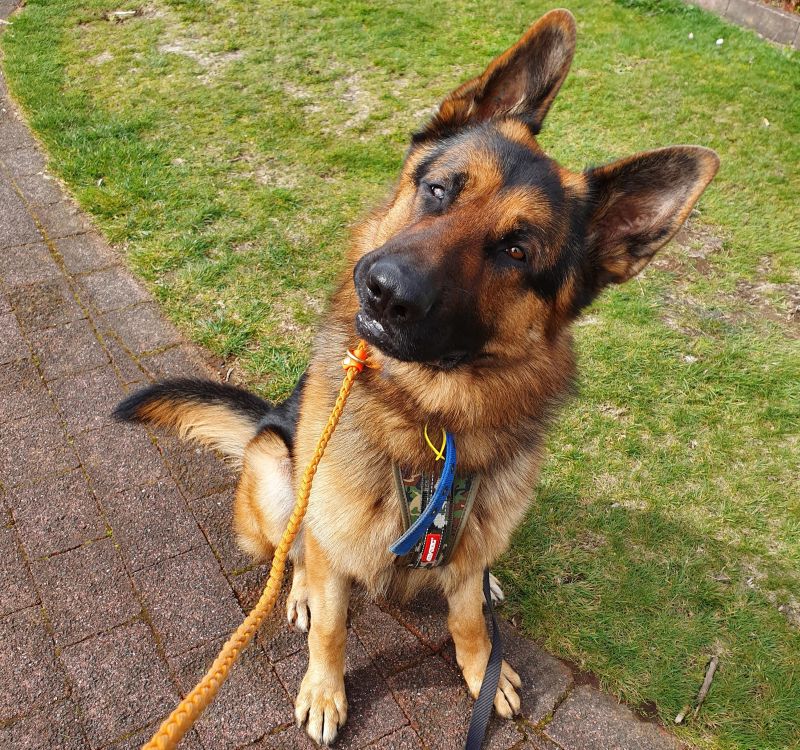
How Can You Avoid Falling for Dog Training Myths?
If you are a new dog owner who’s learning how to train a dog for the first time, or you are trying to solve a problem you’ve never encountered before, you may not know which direction to turn to for solutions.
And if the problem you are trying to work through is causing you and your dog a lot of stress, any solution may seem like a good idea!
However, after finding out how many dog training myths are out there, how can you be sure that the advice you get is the best for you and your dog?
The answer is to stick to high-quality dog behavior sources, who know what they’re talking about!
Learn from High-Quality, Credentialed Dog Trainers or Behavior Consultants
Unfortunately, some well-known trainers still offer advice that is influenced by some of the myths we discussed in this article, or they are simply incorrect or mistaken about some topics.
But the best dog trainers are always continuing to learn about the most effective positive reinforcement training strategies, the newest techniques, and the most recent research so that their training can be as effective as possible.
Many nationally recognized training associations encourage their trainers to continue learning by having them submit CEUs (continuing education units) annually in order to receive and maintain the credentials associated with those groups.
Below, you’ll find a few dog training associations, websites, and other resources that provide knowledgeable advice and solutions, and who base their training on positive reinforcement and building a lifelong bond of love and trust with the dogs in their lives.
- K9 Of Mine – Forgive us for tooting our own horn, but we make sure that the online dog training video courses and articles we offer only include empirically based information and avoid any myths. We’re picky about our sources, and are always making sure that what we offer is based on the most modern training methods and research available.
- Journey Dog Training — Run by a K9 of Mine contributor and dedicated to science-based, positive techniques, Journey Dog Training is an excellent resource for owners. And as a K9 of Mine reader, you can even enjoy a discount on their long-distance training solutions!
- Karen Pryor Academy – Karen Pryor was one of the first trainers to use positive reinforcement training methods consistently and who standardized them into many of the pet dog training practices we know of today. Her site is a fantastic, reliable source of top-notch dog training approaches.
- Association of Professional Dog Trainers – Started in 1993 by Ian Dunbar, this organization offers one of the most well-known certifications for professional dog trainers.
- International Association of Animal Behavior Consultants — The IAABC was founded in 2004 after recognizing that the practice of assisting the public with companion animal behavior problems needed some organization and support.
- The American Society for the Prevention of Cruelty to Animals (ASPCA) – This organization is the first humane society to be established in North America, and is now one of the largest in the world. They have a lot of useful information about pet dogs’ problem behaviors, and great suggestions about when to get a professional trainer’s help.
- The Humane Society of the United States (HSUS) – This organization is dedicated to improving the lives of all animals. They have some good resources on pet dog behavior here.
Don’t Blindly Trust The First Trainer You Talk To
If you are researching a dog training issue and you aren’t feeling too sure about the solution you’ve found, it’s a great idea to do research into why other trainers may disagree.
This is very important if the advice you’ve found seems unusual or just doesn’t sit quite right with you. Trust you gut!
Dogs have been a part of our daily lives for a long time, and everyone who has lived with or trained a dog has a story to tell.
When searching for information about how to solve problems you’re having with your pet, watch out for training myths and quick-fix solutions, since they may rely on poor training methods that could damage the loving friendship you share with your dog.
Usually, if someone claims that they can fix your dog’s behavior issue in minutes, or if their solution seems like a miracle or “too good to be true,” then chances are something is not right.
Real training and behavior modification takes consistent work and requires you and your dog to work together, on an ongoing basis. Shortcuts don’t exist in dog training without serious backlash.
Be ready to do a little research and think critically about whose input you’re ready to trust!
***
Have you searched for dog training help, only to realize the solution you found was a myth? How did you figure out it was untrue?
What websites and resources do you trust to give you excellent training information and solutions?
Share your experiences (and any questions you may have) in the comments below!






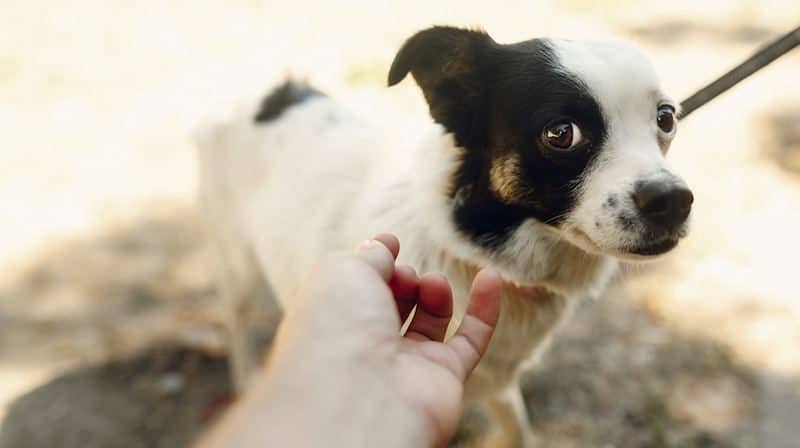

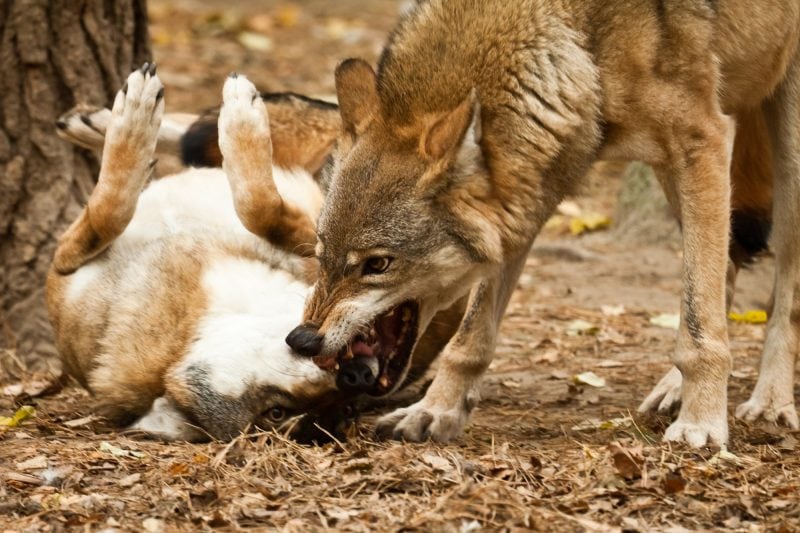
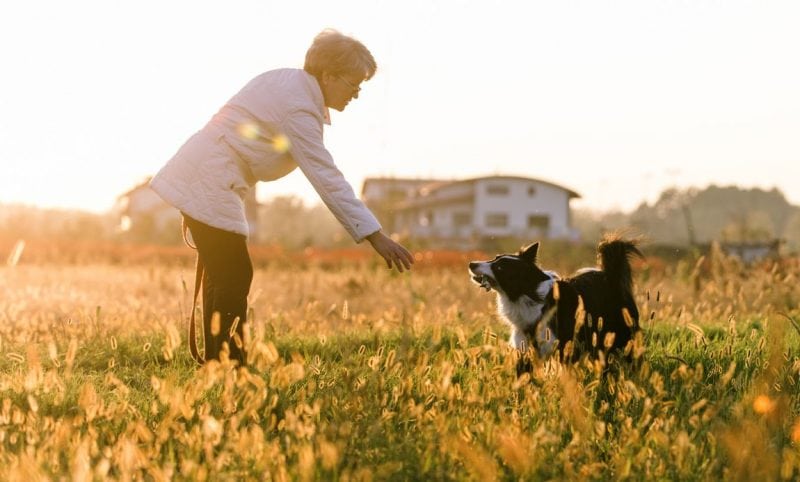
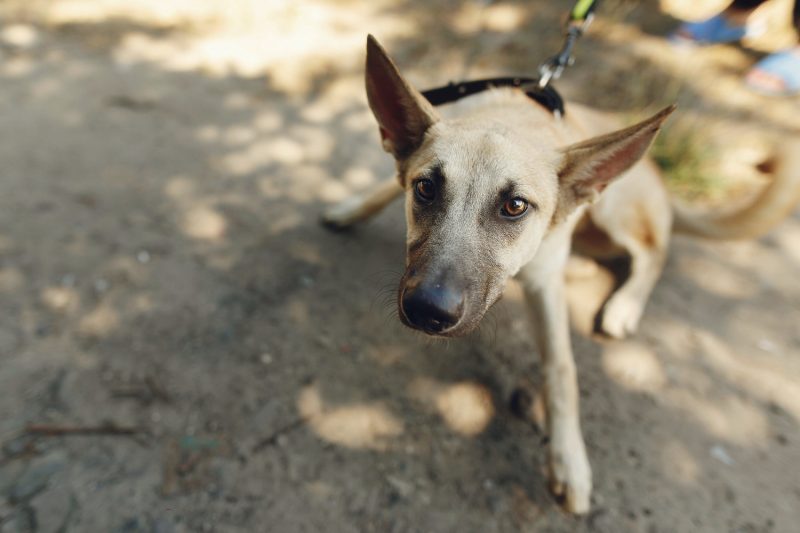
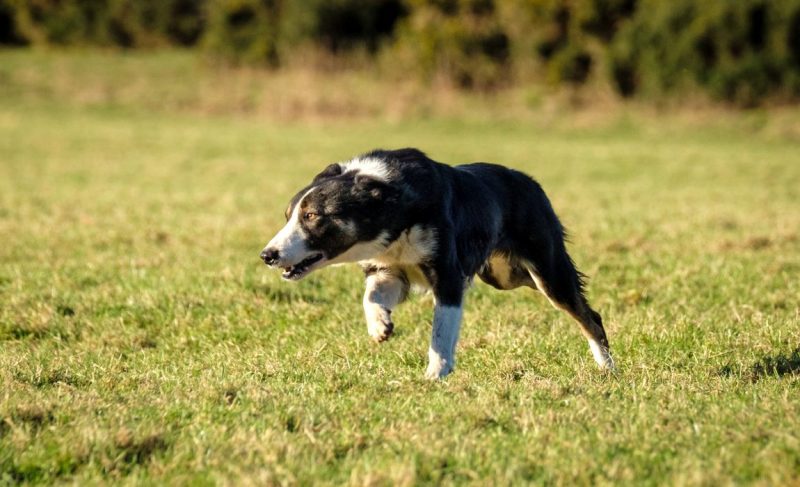

Leave a Comment